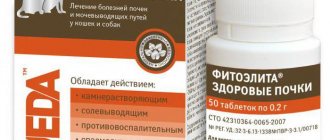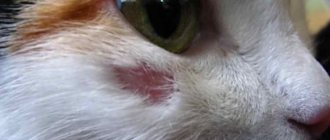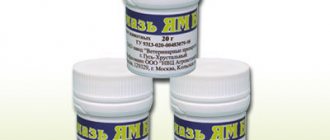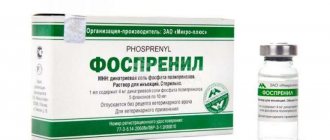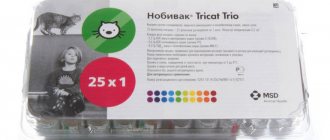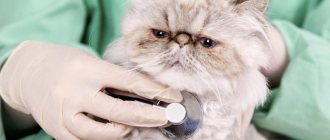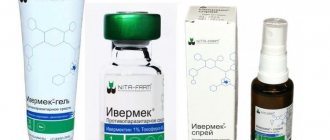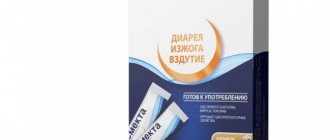It is extremely important for pet owners that their animals are healthy and always feel well. But even simple walks are quite dangerous for pets - you can easily pick up some harmful parasite.
Banning or restricting walks, unfortunately, will not help. Firstly, this can also have a bad effect on the animal’s health. Secondly, even if you don’t walk outside, you can still catch parasites. Even you yourself can very easily bring them home on your outerwear or, for example, shoe soles if you don’t want to. The main help in this case is Aversectin ointment, recommended by professional doctors.
general characteristics
The main medicinal substance is aversectin S. It guarantees the entire healing effect.
One gram of this medicine contains 0.5 milligrams of aversectin, which is why it is called aversectin ointment 0.05%.
It is characterized as a product of natural origin. It was originally created to combat parasites in the skin that appear in tame birds and domestic animals. It was obtained by professional biologists when conducting microbiological synthesis of actinomycetic bacteria.
In addition to the aversectin already mentioned above, the drug includes:
- polyethylene oxide-1500;
- glycerol;
- polyethylene exide-400.
It is the combination of all these substances together that provides an excellent healing effect. A complete list of components that make up the ointment can always be found in the instructions included with it when sold.
The ointment looks like a homogeneous pale brown liquid with a very specific odor.
Sold in plastic jars with a volume of fifteen, thirty, sixty and five hundred milliliters.
It should be stored in a cool, dry place, away from any food and where it cannot be found by children. Any back shelf of the refrigerator will work well. The ointment can be stored for no more than 48 months from the date of production and only 24 days from the moment the package is opened.
For more information on storing such medicines, watch this thematic video:
The ointment can be purchased, as a rule, at almost any veterinary pharmacy.
You may be interested in: Rules for using the drug "Duphalight" in the treatment of cats
Release form, composition and packaging
Ointment 0.05% of uniform consistency, white with a yellowish tint, with a weak specific odor.
| 100 g | |
| aversectin C | 50 mg |
Excipients: polyethylene oxide 1500, polyethylene oxide-400, glycerol (distilled glycerin).
Packaged in 15, 20, 30, 60 and 500 g in polymer cans of appropriate capacity, with a tamper evident lid.
Each jar is labeled with the name of the manufacturing organization, its trademark and address, name, purpose, method of use and quantity of the drug in the package, name and content of the active substance, batch number, date of manufacture, expiration date, storage conditions, the inscription “For animals”, service station designations and provide instructions for use.
Certificate of registration No. PVR-2-4.5/01653 dated 06/30/06
Indications for use
The ointment is prescribed by veterinarians for the following entomotic diseases:
- felicolosis;
- ctenocephalosis:
- trichodectosis.
Also for acarosis:
- sarcoptic mange;
- otodecosis;
- entomosis;
- notoedrosis;
- demodicosis.
IMPORTANT: the use of this medicine is under no circumstances recommended without the prescription of a specialist! Treating yourself can have a very bad effect on your cat if you use the wrong dose or apply the ointment to her skin incorrectly. And also if the ointment is generally contraindicated for it - for more details, see the next section.
Pharmacological (biological) properties and effects
Insectoacaricidal preparation of contact and systemic action. Active against larval and mature stages of development of sarcoptic mites (Sarcoptes canis, Sarcoptes vulpis, Notoedres cati, Otodectes cynotis, Psoroptes cuniculi) and demodectic mites (Demodex canis), as well as insects (Ctenocephalides canis, Ctenocephalides felis, Linognathus setotus, Trichodectes cards) , parasitic on dogs, cats, fur-bearing animals and rabbits.
The mechanism of action of aversectin C is its influence on the current of chlorine ions through the membranes of nerve and muscle cells of the parasite. The main targets are glutamate-sensitive chloride channels, as well as gamma-aminobutyric acid receptors. A change in the current of chlorine ions disrupts the conduction of nerve impulses, which leads to paralysis and death of the parasite.
When applying the ointment to the skin, aversectin C has a contact effect in places where parasites are localized (on the skin, in hair follicles and sebaceous glands), and after absorption it has a systemic insectoacaricidal effect. The maximum concentration of aversectin C in the blood serum after applying the ointment is observed on days 3-5. Aversectin is excreted from the body mainly with feces unchanged within 10-12 days.
Aversectin ointment® 0.05% in terms of the degree of impact on the body is classified as a low-hazard substance (hazard class 4 according to GOST 12.1.007-76), in recommended doses it does not have locally irritating, resorptive-toxic, sensitizing, embryotoxic, teratogenic and mutagenic effects. Well tolerated by dogs, cats, fur-bearing animals and rabbits of different breeds and ages.
When should it not be used?
Allergies occur not only in people, but also in animals. So the main limitation to use is increased sensitivity to the chemicals contained in the drug.
Should not be used under any circumstances when:
- the cat has been diagnosed with infectious diseases;
- the animal you want to treat is less than two months old;
- the animal is undergoing a rehabilitation period;
- an animal in a state of pregnancy;
- Your pet has been identified as having an individual intolerance to this medication (in the first place, this is why you need to consult a good professional doctor).
Most often, however, this medicine is tolerated well by pets and without allergy attacks. But if an allergic reaction does occur, it is usually vomiting, irritation, or a pinkish-pale or red rash on the cat’s skin. If you notice this, you should immediately stop using aversectin ointment and immediately inform your doctor.
IMPORTANT! Also, aversectin ointment cannot be combined with other anti-parasite agents and medications that already include aversectin as an active ingredient.
How does it work?
The main active ingredient, aversectin C1, affects the current strength of chloride ions passing through the entire nervous muscle tissue of the parasite and has a destructive effect on it.
The main goal is to affect chloride ion channels as well as acid receptors. The power of the flow of chloride ions changes, as a result, the body of the parasites and their nervous system begin to work incorrectly and, as a result, the enemies of your four-legged friends die, and they recover.
Aversectin C is absorbed quickly because the active elements of the pet’s skin are stimulated immediately after the ointment is applied to the damaged area. Immediately after this, it begins to act, that is, kill parasites. But for maximum effect, you should wait about 3-6 days.
Aversectin is excreted naturally approximately 10-12 days after it is applied (excreted in feces and other secretions).
You may be interested in: The drug "Profender" for the fight against worms in cats
The main advantage of this ointment is its safety for cats (subject to the above recommendations), since it does not have any side effects.
Indications for use in cats
Enterosgel for cats: dosage, how to give, instructions for use
The drug aversectin C has a pronounced therapeutic effect against microscopic mites that infect the skin of pets. Used to treat sarcoptic mange, notoedrosis, otodectosis, demodicosis.
The ointment acts on demodectic mites, which also infect humans. But the use of the veterinary drug in humans is not recommended. Getting on the surface layers of human skin, aversectin C can provoke the development of irritations and allergic reactions.
Penetrating into the systemic bloodstream, the active component of Aversectin ointment leads to the development of attacks of nausea. This is why there is a special marking on the ointment - for veterinary use.
Trichodectosis
Aversectin ointment has a pronounced therapeutic effect when a cat is infected with fleas, lice and trichodects (hair eaters).
Aversectin ointment for cats - instructions for combating trichodectosis:
- The coat is not clipped.
- Using a soft brush, rub a small amount of Aversectin ointment into the skin. Instead of a brush, you can use a napkin. Apply the drug against hair growth, paying special attention to the places where there are the most parasites.
- The ointment is distributed using a comb over one part of the body.
- A special immobilizing collar is put on the cat so that it does not have the opportunity to lick the drug.
- After 24 hours, Aversectin ointment is applied to the remaining areas of the body.
For the animal to fully recover and get rid of ectoparasites, one treatment is necessary. In some cases, re-treatment is carried out, but not earlier than after 30 days.
Trichodectosis in a cat
Sarcoptic mange, Demodectic mange, Notoedrosis
In case of sarcoptic mange, notoedrosis and demodicosis mite infestation of the pet, the regimen of therapy and application of the drug changes. First of all, cut off the fur in the affected areas using nail scissors for this purpose.
Important! Using a razor is not recommended, as it can injure your cat's delicate skin.
Next you need to follow the steps:
- The animal is bathed to soften and remove crusts formed on the body. Use special shampoos that have a keratolytic (exfoliating) effect. You can also use hydrogen peroxide, plain warm water, or a chlorhexidine solution to soften the crusts on the animal's body.
- After bathing, the pet is dried. Take a plastic or glass spatula and carefully apply Aversectin ointment to the affected areas. When processing, it is necessary to cover not only the affected areas, but also the area of healthy skin. Thereby preventing the spread of parasites.
After applying the antiparasitic agent, it is recommended to put a special collar on the pet, preventing the animal from accidentally licking the medicine. When the animal combs the affected areas with its paws, you can put a blanket on the cat. The therapeutic effect occurs in cats after double treatment.
Ear form of scabies
Otodectosis or ear scabies is a common cause of inflammation in the ear canal in cats. The course of treatment with Aversectin ointment for cats with otodectosis includes the following points:
- Cleaning the ear canal with a napkin from dried crusts of exudate and wax. For these purposes, special lotions, chlorhexidine solution or olive oil are used.
- The ear canal is dried with a dry cloth or cotton pad before applying the ointment.
- Aversectin ointment for ear mites in cats is slightly heated and the affected ear canal is treated using a napkin soaked in the dissolved ointment.
- To distribute the ointment evenly, fold the ear and massage it a little.
- The outer part of the auricle is treated with a napkin, capturing the skin and hair around it.
- The second ear is treated in the same way as the first, regardless of whether it is affected by a tick or not. New wipes are used for processing.
To prevent animals from scratching in the ear area, it is necessary to wear a special collar. The treatment is carried out twice and this is sometimes enough for the complete recovery of the animal with otodectosis.
Otodectosis in a cat
Instructions for use
In general, aversectin is not difficult to use, but it is still better to study the instructions for use and follow simple rules.
For the drug to be most effective, you need to use it like this:
- Completely remove hair from areas with diseased skin (this can only be omitted if the pet is being treated for lice or fleas).
- Rinse the skin thoroughly and dry until completely dry, completely remove crusts and scabs.
- Just in case, put a plastic collar on your cat.
- Rub in the medicine. The correct dosage of ointment is 0.2 grams per 1 square centimeter of the affected skin area.
To make it more convenient, you can use the medicine warmed up.
IMPORTANT! You should always apply the ointment wearing hand protective equipment (gloves), and after applying it, wash your hands better using laundry soap.
If a cat has sarcoptic mange, otodectosis, or notoedrosis, then the medicine should be used twice, with a break of 5-7 days between uses.
If a mixed form of demodicosis is detected, then the ointment must be applied as many as 7 times with the same breaks. If this variant of the disease is diagnosed, then special combined treatment is required. You should start with etiotropic treatment, and then antifungal, immunocorrective and antimicrobial therapy is needed.
To determine that a cat has recovered, you need to take scrapings from areas of its skin and check that there are no parasites on this skin. If suddenly parasites are still detected, treatment should be continued further.
It is also necessary to change the bedding so that parasites cannot multiply in it and infect your pet again.
See also a useful video on the topic with advice from a veterinarian:
Application procedure
In animals suffering from sarcoptic mange, notoedrosis, demodicosis, the hair in the affected areas is first cut off, crusts and scabs are removed, and then a thin layer of ointment is applied with a spatula (a glass rod or a cotton-gauze swab), evenly distributed from the periphery to the center, and rubbed in vigorously ( brush, wide plug) into the affected areas, including borderline healthy skin up to 1 cm.
To prevent licking of the medicine, animals are given a neck collar, a muzzle, or their jaws are secured with tape.
Treatment is carried out 2-5 times with an interval of 5-7 days until the animal’s clinical recovery, which is confirmed by two negative results of microscopic studies.
The frequency of application and the interval between animal treatments are indicated in the table.
| Type of animal, disease | Frequency of application, interval | Note |
| Rabbits: psoroptosis | 2 times with an interval of 5-7 days* | |
| Cats, dogs, fur-bearing animals: otodectosis, notoedrosis, sarcoptic mange | 2 times with an interval of 5-7 days* | For ease of use, the ointment can be melted (in the manufacturer's packaging) in hot water to a liquid state and used warm for insertion into the ears or rubbing into the affected areas of the body. |
| Dogs: demodicosis: squamous form | 3 times with an interval of 5-7 days | |
| pustular form | 7 times with an interval of 7 days | Treatment of pustular and mixed forms should be carried out comprehensively using etiotropic, pathogenetic and symptomatic drugs |
| mixed form | 7 times with an interval of 7 days*. For multiple lesions with an interval of 5 days* | |
| Dogs, cats, fur-bearing animals: entomoses: trichodectosis linognathosis aphanipterosis | 2 times with an interval of 7-10 days* | The ointment is rubbed into the skin against the growth of the hair (can be melted) into places where insects accumulate and in the back of the head. To prevent fleas from breeding and reinfecting pets, bedding is replaced. |
* If necessary, treatment is repeated; for acarosis - under microscopy control of scrapings.
Animals with large areas of skin lesions are treated in 2 doses with an interval of 1 day, applying the ointment first to one half of the affected surface of the body, and then to the other.
For acarosis complicated by infection of bacterial or fungal etiology, the use of immunomodulatory, antibacterial or antifungal agents is recommended.
For the ear form of scabies in dogs, cats, fur-bearing animals and rabbits, the external auditory canal is cleaned of scabs and crusts with a damp swab, then the ointment is applied to each ear. The ointment can be heated (in the manufacturer's packaging) in hot water to a liquid state and instilled into the ears while warm. In order to more completely treat the entire surface of the ear and ear canal, the auricle is folded in half and its base is lightly massaged. Treatment is carried out 1-2 times with an interval of 5-7 days. In advanced cases of the disease, complicated by otitis, antibacterial and anti-inflammatory drugs are prescribed. If necessary, the course of treatment is repeated under microscopy control of scrapings. Both ears must be treated with aversectin ointment 0.05%, even in cases where only one ear is affected by mites.
For entomoses (aphanipterosis, linognathosis, trichodectosis), the ointment is rubbed into the skin with a brush (against hair growth) in places where insects accumulate and then the hair is combed with a comb.
To prevent re-infestation by fleas, the animals' bedding is replaced.
Repeated treatments are carried out according to indications, but not more than once a month.
Analogs
Aversectin ointment is an excellent choice for treating your pet. But sometimes its use may be impossible. For example, a veterinarian has determined that a cat has an intolerance to a compound.
Then similar drugs for treating parasites will come to the rescue. And these are acaromectin, lamisil, itracosanol, mycoseptin, sulfur ointment and ordermil.
In addition to ointments against parasites, it is possible to use drugs in granules and tablets. Currently, Alben S, Bravecto, Azinox, Febtal and Dronal have performed best among them.
You may be interested in: The drug "Profender" for the fight against worms in cats
Reviews about aversectin ointment from owners of dogs, parrots and cats
Victor:
— I noticed that my cat began to itch a lot. Of course, I got worried and began to examine her carefully, I was scared because I saw strange and ugly spots on the skin on her stomach. The fur has shed a lot. Of course, I allocated free time as quickly as possible and took the pet to the veterinarian. He recommended aversectin ointment.
I heard mixed reviews about it, but still decided to buy it, since I had already received a recommendation from a specialist. And what? Only three skin treatments were enough for the cat to feel much better and to stop scratching itself. And after three more treatments, the recovery was complete - the spots disappeared, and new hair began to grow. I recommend this product to everyone!
Natasha:
— I have a budgie and recently strange growths appeared on its beak. A friend recommended that I use aversectin ointment 0.05% to help the bird recover.
I applied the ointment to the budgie's beak using a cotton pad and warmed it up beforehand to make it easier. After two weeks of treatment, I washed the cage well, changed the drinking bowl, feeder, and toys. It helped great. This is a really good medicine, unlike some...
Olya:
— After we once again took a walk with our beloved cat, I noticed that a strange rash appeared in his ears, which he scratched very hard. I took her to the vet and got scared. It turned out to be an ear mite; they recommended treatment with aversectin ointment. Luckily, the product is really great! Within a week the rash was completely gone. Additionally, I was pleased with the ease of use and low price.
Alyona:
— My beloved cat fell ill with entomosis. We use this aversectin ointment, it, of course, helps, but very slowly... we have not been able to complete treatment for fifteen days. But it's inexpensive. But with this disease, it seems that this is how it should be. Overall, the product seems to be worth the money.
